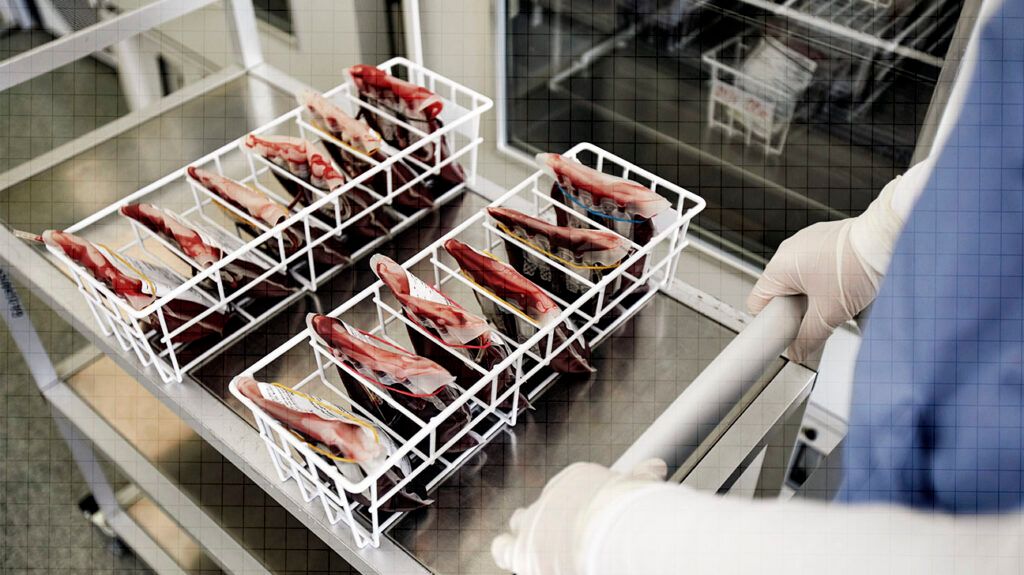Myeloproliferative neoplasms (MPNs) are a group of rare blood cancers in which the bone marrow produces an excess combination of white blood cells, red blood cells, and platelets.
This overproduction can cause bleeding problems, blood clots, and other health problems.
There are several types of MPNs, and doctors use blood and bone marrow tests to diagnose them. Early diagnosis is critical for effectively managing these conditions, while treatment can include a range of approaches, including radiation therapy or phlebotomy.
This article provides an in-depth look at MPNs, including types, diagnosis, and treatment. It also discusses potential outlooks for people with MPNs.

MPNs are a
- red blood cells, which comprise most of the blood and primarily carry oxygen and carbon dioxide around the body
- white blood cells, which help protect the body from infections and injuries
- platelets, which clump together to control bleeding
The overproduction of any of these blood components results from mutations in stem cells, leading to atypical cell growth and function.
There are
According to the Leukemia and Lymphoma Society (LLS), polycythemia vera involves an overproduction of red blood cells, which can make the blood thicker than usual. This condition
Symptoms may include:
- headaches
- dizziness
- a sensation of pressure or fullness below the ribs on the left side, which may indicate an enlarged spleen
- itchiness, particularly after a warm bath or shower
- visual disturbances, such as double vision
- weakness
- redness or other skin color changes on the face, which may appear similar to sunburn or blushing
- unexplained weight loss
Complications can include blood clots leading to stroke or heart attacks.
Essential thrombocythemia involves
The condition can occur without symptoms. However, it can cause symptoms that may include:
- headaches
- burning or tingling in the hands or feet
- visual or hearing problems
- warmth in the hands or feet
This condition also increases the risk of serious blood clotting problems, which can lead to heart attacks and stroke.
Primary myelofibrosis involves a buildup of scar tissue in the bone marrow. The increase in fibrous tissue
Symptoms of primary myelofibrosis include:
- shortness of breath
- fatigue
- pain below the left ribs
- petechiae
- bleeding or bruising easily
- fever
- night sweats
- feeling full sooner than usual while eating
- unintentional weight loss
Chronic myelogenous leukemia results from a genetic mutation,
Symptoms of the condition can include:
- fever
- fatigue
- unexplained weight loss
- night sweats
- pain below the left ribs
Chronic neutrophilic leukemia is a condition
According to the LLS, symptoms may not be present in the early stages. As the condition progresses, symptoms may include:
- fatigue
- bone pain
- unintentional weight loss
- night sweats
- easy bruising
- enlarged liver or spleen
Chronic eosinophilic leukemia involves an
Doctors will typically use
- reviewing a person’s medical history and conducting a physical examination
- using blood tests, such as a complete blood count, to examine levels of red blood cells, white blood cells, and platelets
- ordering a bone marrow biopsy to check for atypical cells or scar tissue
- using chromosome and molecular testing to check for genetic abnormalities that can cause MNPs
Early detection through these tests is crucial for managing symptoms and preventing complications.
There are many
A healthcare professional could recommend any of the following:
- watchful waiting, which involves a doctor monitoring a person’s condition for changes that may indicate treatment is necessary
- transfusion therapy
- phlebotomy
- chemotherapy
- targeted therapy
- stem cell transplant
- immunotherapy
- radiation therapy
- surgery
- platelet apheresis, which involves separating the platelets from the rest of the blood
In some cases, a person may be eligible to join a clinical trial for MPN treatments that are in development.
The outlook for MPNs varies widely and depends on a range of factors.
People with MPNs can also experience complications that may worsen their outlook. For example, people with essential thrombocythemia may also develop deep vein thrombosis, stroke, or a heart attack.
Other factors that
- their age
- their overall health
- the type of MPN they have
- the amount of white blood cells in the blood or bone marrow
- response to treatment
Myeloproliferative neoplasms (MPNs) are a group of conditions that affect cells in the bone marrow, leading to an overproduction of certain components in the blood. Several types of MNPs exist, including polycythemia vera, essential thrombocythemia, and chronic myelogenous leukemia.
The treatment a doctor recommends for someone with an MPN can depend on the type. Each type has a slightly different rate of progression and mechanism of action.


